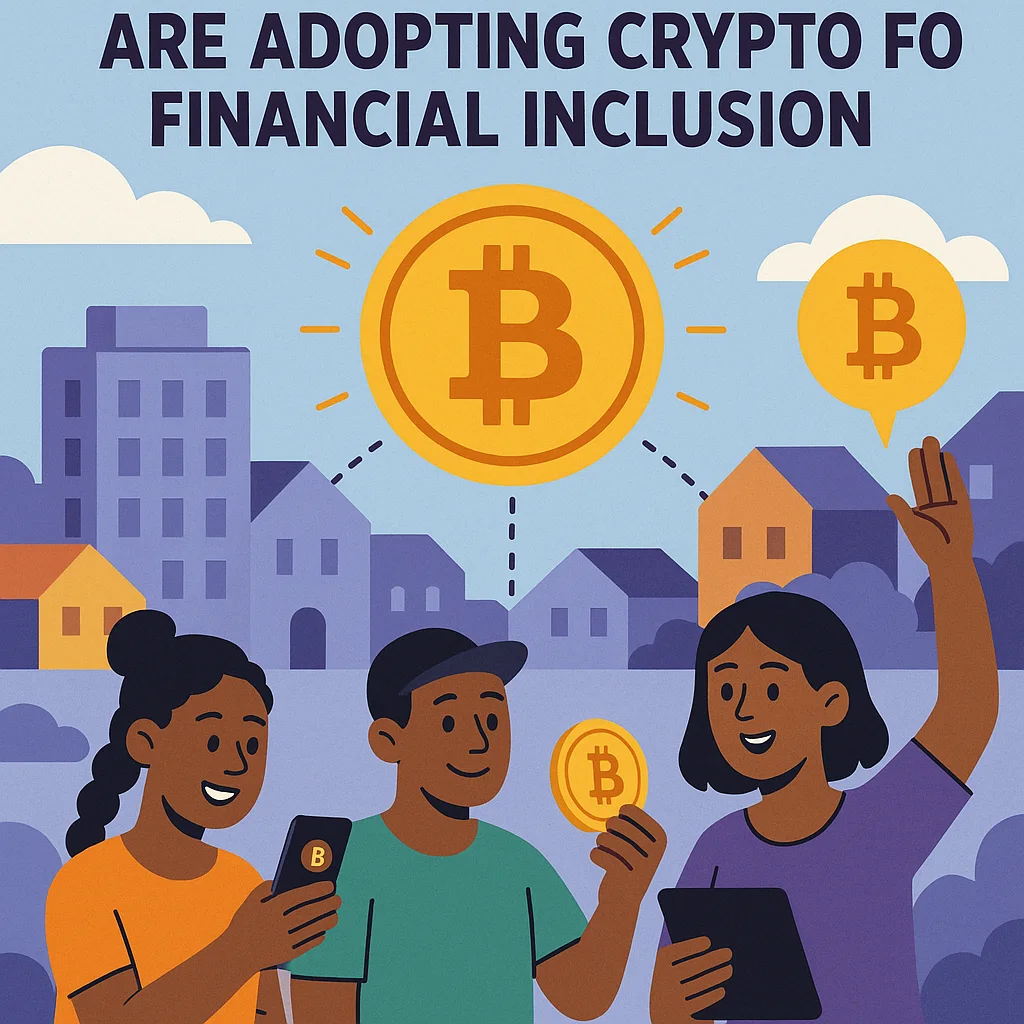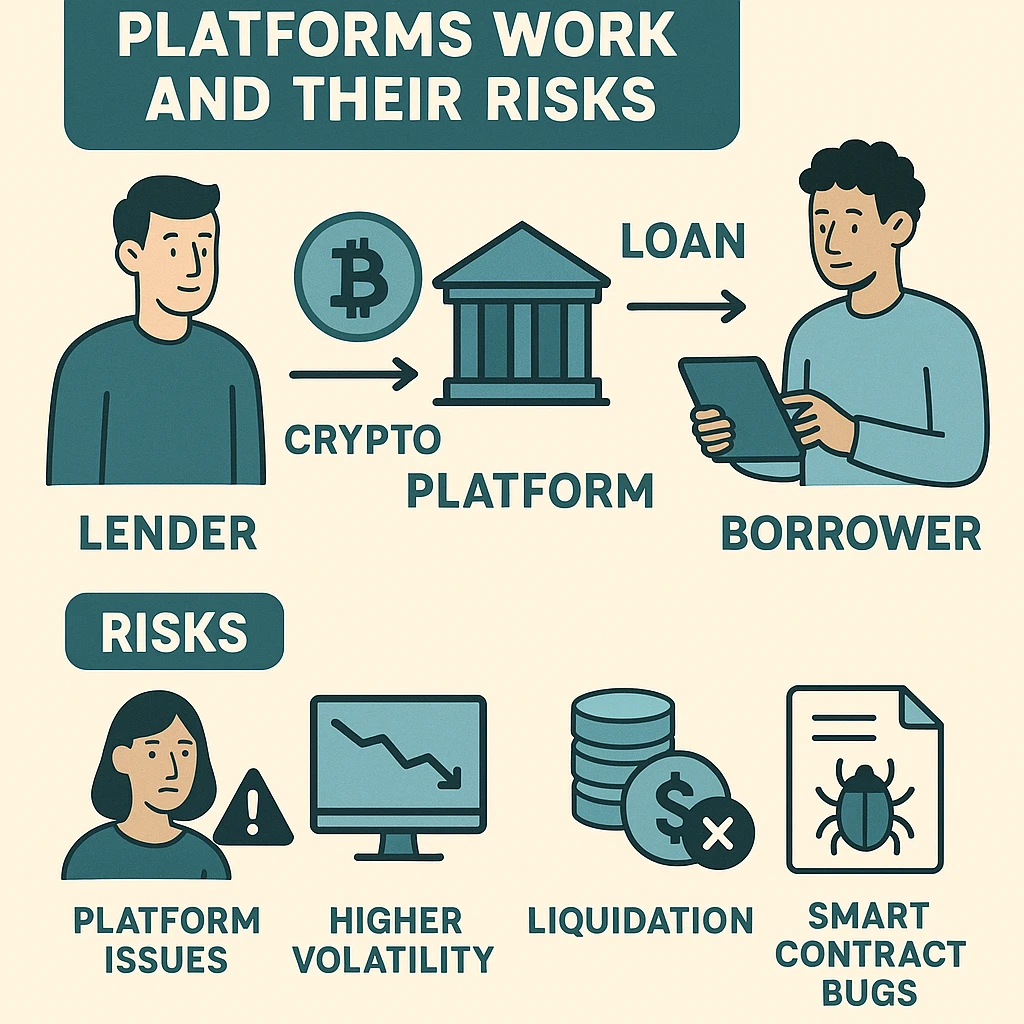Developing nations may experience the most revolutionary effects of the global cryptocurrency ecosystem as it develops. Since local currencies are frequently erratic or prone to inflation, and millions of people lack or have inadequate access to banking, cryptocurrency presents attractive alternatives by granting access to international financial systems and digital services. Peer-to-peer transfers and decentralized finance (DeFi) are two examples of how cryptocurrency is changing economies in Asia, Latin America, Africa, and other regions.
In this article, we dive into how developing nations are embracing crypto—and why it matters.
1. The Financial Inclusion Gap
More than 1.2 billion adults are still not banked, meaning they are not able to access traditional financial services. It is practically impossible to borrow, save, or obtain credit without them. Even the banked find it difficult to maintain value and carry out trustworthy transactions in nations with weak institutions or high inflation.
Cryptocurrencies provide solutions:
-
Borderless financial access—no need for a bank account, ID, or documents .
-
Lower-cost remittances—crypto remittances can slash high fees and lengthy delays .
-
Inflation hedge—stablecoins and Bitcoin preserve value when local currencies collapse .
Widespread smartphone use and initiatives to promote digital literacy are bringing digital wallets to urban slums and villages, giving people access to cross-border trade, lending, and savings.
2. Real-World Use Cases
2.1 Crypto in Kibera, Kenya
In Nairobi’s Kibera, Africa’s largest slum, nonprofits and fintechs are teaching hundreds to use Bitcoin for daily work and transactions.
-
AfriBit Africa pays waste collectors via Lightning Network, enabling zero-fee digital transfers instantly.
-
Drivers pay for their fares using Bitcoin, which is accepted by local vendors and less expensive than M-Pesa top-ups.
-
Some users hold large shares of their savings in Bitcoin—and though it involves volatility risks, education efforts help them manage exposure.
AfriBit co-founder Ronnie Mdawida describes crypto as an accessible lifeline for people without banking documentation . But fintech experts warn against overexposure given the asset’s volatility.
2.2 Africa-Wide Stablecoin Adoption
Stablecoins are taking hold across Africa, offering stability through dollar-pegged assets:
-
Mansa, a payments network in Africa, uses Tether (USDT) for 90% of its daily transactions—enabling fast and reliable cross-border payments.
-
Platforms like Yellow Card in Nigeria and stablecoin-linked systems in Kenya are weaving them into mobile remittances.
-
In fragile economies, this movement denotes a strategic shift toward digital dollar reserves and increased financial agency.
However, regulatory uncertainties and concerns over systemic risk persist amid the nascent regulatory frameworks.
2.3 India: A Regulatory Rollercoaster
India exemplifies a complex path toward inclusion:
-
More than 60% of adults lacked bank accounts; the widespread use of smartphones made cryptocurrency possible.
-
Despite a 30% tax on gains and 1% trade TDS, and RBI's CBDC push , crypto use—including freelance payments and remittances—is growing.
-
Discussions on Reddit emphasize how cryptocurrency banking can help small businesses get loans without collateral and cut down on expensive fees.
Still, the regulatory ambiguity continues—but the underlying demand for inclusion remains strong.
2.4 Latin America and the Caribbean
Crypto adoption is on the rise across the region:
-
In 2021, Bitcoin became legal tender in El Salvador. Although its use was supported by the $150 million trust and the Chivo wallet, merchant acceptance has been modest at 20%.
-
In order to protect savings during periods of skyrocketing inflation, Argentina and Venezuela have resorted to stablecoins and cryptocurrency.
IMF reports that many Latin American countries are establishing crypto regulations—both to harness benefits and to mitigate risks .
3. Why Crypto Works in Developing Nations
Several factors fuel crypto adoption:
-
Smartphone Usage: Mobile penetration enables instant wallet access.
-
Remittance Needs: Crypto remittances are cheaper and faster than banking systems.
-
Inflation Hedge: Crypto offers value preservation in volatile currencies.
-
Financial Autonomy: Crypto allows transactions and borrowing without banks or documentation.
-
Youth & Startups: Entrepreneurial youth drive local crypto apps—Bundle Africa, Abra, Bitsika, and others.
Where traditional banking falls short, cryptocurrency becomes a means of cross-border opportunity, business access, and economic participation.
4. Key Challenges & Risks
Despite the potential, challenges abound:
-
Volatility: Bitcoin’s rapid swings pose risk for low-income users.
-
Security & Scams: Phishing and hacks remain real threats .
-
Regulatory Void: Many countries lack comprehensive crypto laws, leading to uncertainty.
-
Infrastructure Gaps: Limited internet and electricity restrict usage.
-
Education Needs: Knowledge barriers require ongoing financial literacy efforts.
-
CBDC Competition: Central banks are fast-tracking digital currencies, possibly overshadowing private crypto .
For sustainable inclusion, these issues must be addressed through regulation, education, and hybrid innovation.
5. Toward Inclusive Crypto Futures
5.1 Hybrid CBDC-crypto Models
In an effort to integrate with private crypto systems for inclusive finance, nations like Nigeria and India are testing or introducing CBDCs (such as eNaira and Digital Rupee).
5.2 Regulatory Sandboxes & Legal Frameworks
Structured regulation is being investigated by emerging economies. In addition to its CBDC initiative, Morocco is creating a crypto law. Pakistan is establishing a dedicated council to formally oversee cryptocurrency.
5.3 Stablecoins + DeFi Growth
Stablecoin platforms and organizations like Mansa are encouraging easily accessible savings and remittances, bringing in DeFi that benefits local communities.
5.4 Fintech Innovation
African startups and India-based fintechs are introducing user-friendly, low-cost crypto services tailored to local needs .
6. The Road Ahead: 2025 and Beyond
-
Supportive Regulation: More developing countries will likely regulate cryptocurrency instead of outright banning it.
-
Focus on Education & Security: Secure platforms and literacy initiatives are necessary for sustainable adoption.
-
Stablecoin Expansion: Dollar-backed tokens will dominate transactional use.
-
CBDC-Crypto Synergy: In digital finance ecosystems, private tokens and CBDCs can work in tandem.
-
Global Collaboration: The use of crypto for human development is being investigated by UN organizations (such as the UNDP in Asia Pacific).
Crypto’s evolution in developing nations is accelerating—and the global financial structure is more inclusive than ever.
✅ Conclusion
Beyond speculative trading, cryptocurrency holds promise for empowering communities, facilitating low-cost remittances, offering inflation hedges, and bringing millions of people into the digital economy in developing countries. Brazil, India, Nigeria, Pakistan, and Kenya's Kibera are among the nations using cryptocurrency to create new financial narratives.
However, innovation needs to be combined with stable infrastructure, education, and regulation for true inclusion. Developing countries can surpass established financial systems as crypto and CBDCs co-evolve, bringing in contemporary economies based on resilience and transparency.





Leave a Reply